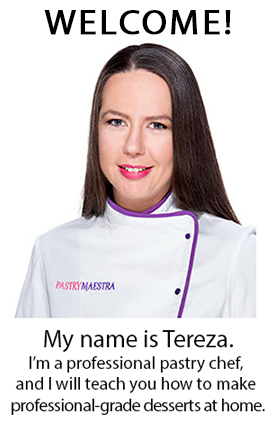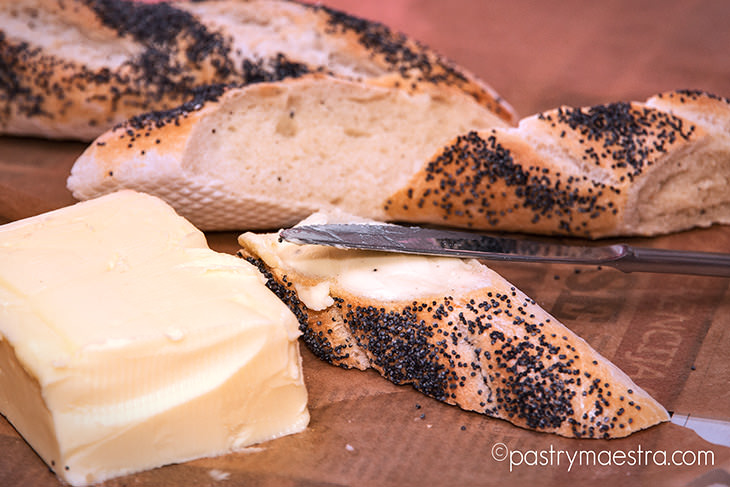
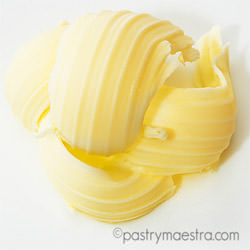
F
at. Now, that is one depressing word, right? The first thing that comes to mind is obesity, followed by cholesterol, cardiovascular diseases… Brrrrr! But let’s not think about that now, happy thoughts, please! A slice of warm, crunchy baguette, with a layer of melting butter on top, crispy slices of bacon, French breakfast full of buttery croissants and brioches, foie gras, duck confit, French buttercream, beurre noisette, oh I’m so hungry now… So, in order to master the art of baking, what do you need to know about fats?
Types of Fat
There are two main types of fat used in baking – solid fats and liquid fats. Solid fats are butter, margarine, lard and coconut butter, and liquid fats are different types of oils, such as sunflower, olive, pumpkin seed, flax seed, and others. There are other ingredients that have high-fat content, like egg yolks, nuts and cream, but those are not considered as fats.
Solid Fats
Butter
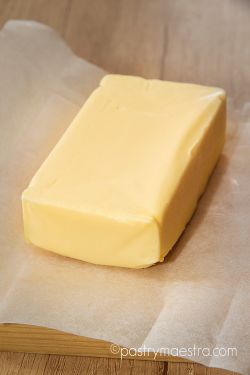
Butter is fat produced most often from cow’s milk by churning cream. Butter is not 100% fat, but it has to contain at least 80% fat in the USA, and in Europe, the fat content should be at least 82%. The rest is water and milk solids, calcium, potassium and vitamin A. In stores you can find salted butter, which contains up to 2.5% salt added. In pastry making, we will most often use unsalted butter, while there are some exceptions (see my post about the laminated dough) where it is recommended to use dry butter (beurre sec) which contains 84% – 85% fat. Shelf life of butter is up to 9 months if stored at -18ºC (-0.4°F ), and after defrosting it is best to keep it at 0°C-2ºC ( 32°F-36°F ).
Lard
Lard is pure pork fat, containing almost 100% fat. By the late 20th century, lard had begun to be considered less healthy than vegetable oils (such as olive and sunflower oil) because of its high saturated fatty acid and cholesterol content. However, despite its reputation, lard has less saturated fat, more unsaturated fat, and less cholesterol than an equal amount of butter by weight. Unlike many types of margarine and vegetable shortenings, unhydrogenated lard contains no trans fat. It has also been regarded as a “poverty food”.
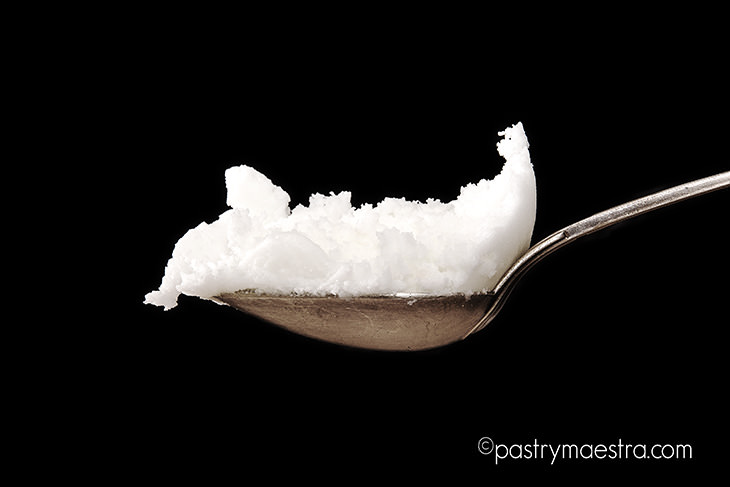
Lard is one of the few edible oils with a relatively high smoke point, thanks to its high saturated fatty acids content. Pure lard is especially useful for cooking since it produces little smoke when heated and has a distinct taste when combined with other foods. Many chefs and bakers deem lard a superior cooking fat over other types of shortening because of lard’s range of applications and taste. Because of the relatively large fat crystals found in lard, it is extremely effective as shortening in baking. Pie crusts made with lard tend to be flakier than those made with butter. Many chefs employ both types of fat in their pastries to combine the shortening properties of lard with the flavor of butter.
Margarine
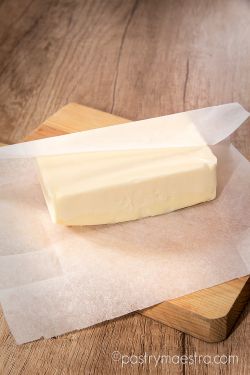
Margarine or shortening is a vegetable fat, made to be a cheaper substitute for butter. Originally it was made from beef tallow and skimmed milk. However, modern margarine is made from vegetable oils and water, with some coloring, emulsifiers, preservatives and vitamins added. It is firmed by exposure to hydrogen gas at very high temperatures in a process called hydrogenation. The amount of fat in margarine is also at least 80%. It is much cheaper than butter, but it also has inferior flavor than butter. Although margarine doesn’t contain harmful cholesterol as butter does, it contains trans fats – the molecules that are a risk factor for cardio-vascular diseases. Nevertheless, margarine is used for spreading, baking, and cooking. It is also commonly used as an ingredient in other food products, such as pastries and cookies.
Coconut Butter
Coconut butter is a whole meat of coconut pureed into a creamy butter that contains 61%-72% fat. It is usually used in making raw and vegan desserts. Coconut butter contains coconut oil, and the oil melts at 24°C (76°F). Therefore, depending on the climate you live in, your coconut butter will be firm, spreadable or liquid. If it is firm at room temperature, you will have to melt it in order to use it. You can pop it in the microwave for a few seconds or put it in a bain-marie until melted. Be careful not to overheat it, melted coconut butter shouldn’t be warm when you touch it.
If you can’t find coconut butter in your area, and you really want to try it on, there is an easy way to make it at home. You just need some unsweetened shredded coconut and a good quality blender. Blend the coconut until nice and creamy; it will take 5-10 minutes depending on your blender. You can store it in a jar, at room temperature and it will last for a few months if you don’t eat it first, of course.
Cocoa Butter
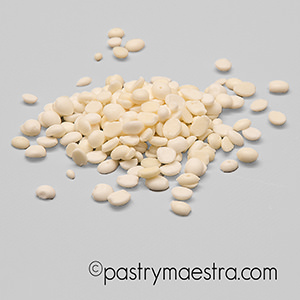
Cocoa butter or theobroma oil is a firm, pale yellow fat extracted from the cocoa bean. It is used to produce in making toiletries and in the pharmaceutical industry. Cocoa beans need to be fermented, roasted and then separated from their shells. By grinding shelled cocoa beans, we get cocoa liquor or chocolate liquor, which is pressed to separate cocoa solids from cocoa butter.
Cocoa butter is one of the most stable fats known, a quality that, coupled with natural antioxidants, prevents rancidity, giving it a storage life of two to five years. It is a major ingredient in all types of chocolates – white chocolate, milk chocolate, and dark chocolate. Actually, by the law in USA, chocolate must contain only cocoa butter as a fat ingredient and in EU up to 5% of fat can be out of other sources. The best quality chocolate contains exclusively cocoa butter in its fat content, and you can recognize that in taste, the snap of the bar when you take a bite and that melt in your mouth. Cocoa butter’s melting point is just around body temperature, and that is why chocolate melts so wonderfully in our mouth.
Palm Oil
Why did I put oil under solid fats category? The highly saturated nature of palm oil makes it solid at room temperature in regions with temperate climate. It is used as a cheap substitute for butter, in making pastry dough and baked goods.
Palm oil is derived from the pulp of the fruit of the oil palms. It is naturally reddish in color because of high beta-carotene content. Don’t confuse it with palm kernel oil derived from the kernel of the same fruit, or coconut oil derived from the kernel of the coconut palm. The differences are in color (raw palm kernel oil doesn’t contain carotenoids, so it is not red), and in saturated fat content: Palm fruit flesh oil is 41% saturated, while Palm Kernel oil and Coconut oil are 81% – 86% saturated.
Oils
Oils can be extracted from several plants – soy, sunflower, canola, olives, flaxseed and pumpkin seed. There are also oils that can be extracted from nuts as peanut, almond, hazelnut, walnut or coconut, and they have their distinctive flavor. Vegetable oils contain no animal products, so they are cholesterol free. Oils always stay in a liquid state, before and after baking, and they don’t aerate when mixed with sugar like solid fats do.
Role of Fats in Baking
Fat in a baked product provides flavor and color, adds moisture and richness, assists with leavening, extends shelf life and shortens gluten strands which results with a softer baked product. Fat, when beaten with sugar, holds little bubbles of air and that air expands during baking. In yeast doughs, fat shortens gluten strands thus making baked products softer, and finer textured. Fat attracts flavor molecules, so when you add vanilla, citrus zest, or other flavors to the mixture, make sure that you first beat it into the fat.
In pastry making, we use solid and liquid fats. If you want to substitute one type of fat to another, keep in mind that you change solid fat to another solid fat and vice versa: otherwise, it will affect the texture of the cake.
Why do We Love Butter that Much?
I’ll tell you why; because it tastes wonderfully! Don’t you love to spread this creamy divinity on a slice of freshly baked bread? Or, if you are even a bit like me, on the first half of your morning crusty baguette, and then take a loud bite? So while you are crushing that artisan, crispy crust, the heavenly taste of butter melts in your mouth…and a sip of my black, bitter hot coffee, mmm… I know, I know, I should go easy on the coffee…
This outstanding taste definitely makes a difference in baking, too. However, not all butter is equally good. You have to search for the best quality. Although there is the same fat content written on each stick of butter in my supermarket, I can assure you that the differences in texture and taste are huge! So, you want your butter to be firm in the fridge, and when you cream it, it will hold more air. The result is – better texture of the pastry.
Clarified Butter
Butter is clarified when we remove all of its water and milk solids. So what remains is 100% of fat. Because of that, it has higher smoke point than regular unclarified butter, and it also has a longer shelf life. This kind of butter is pretty soft, and it is not suitable for creaming, but it can be used in pastries where you need melted butter. Type of clarified butter with some spices added that originated in ancient India is called ghee.
Beurre Noisette
Beurre noisette, literally “hazelnut butter” when translated from French is butter that was heated over low heat until milk solids separate from fat and begin to brown. When they reach toasty hazelnut color, the pan is removed from the stove, and butter has to be strained through a cloth. Beurre noisette has a distinctive, nutty flavor, and it is used in French cuisine and pastry, usually for making Madeleines and financiers. On the photos below, you can see the process of making beurre noisette:

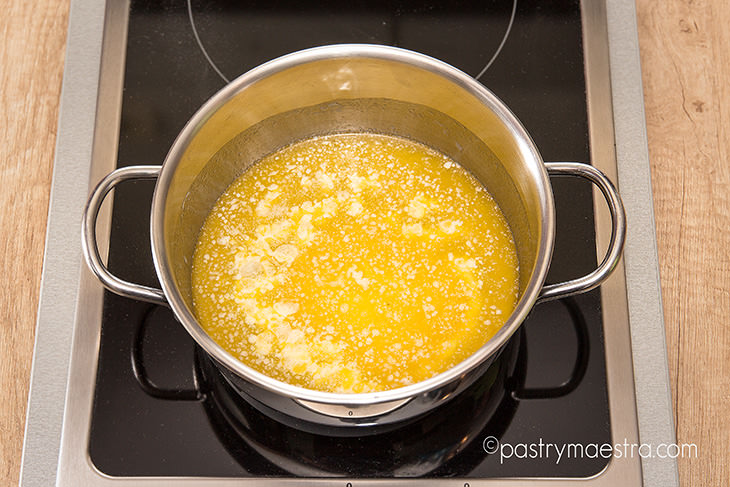
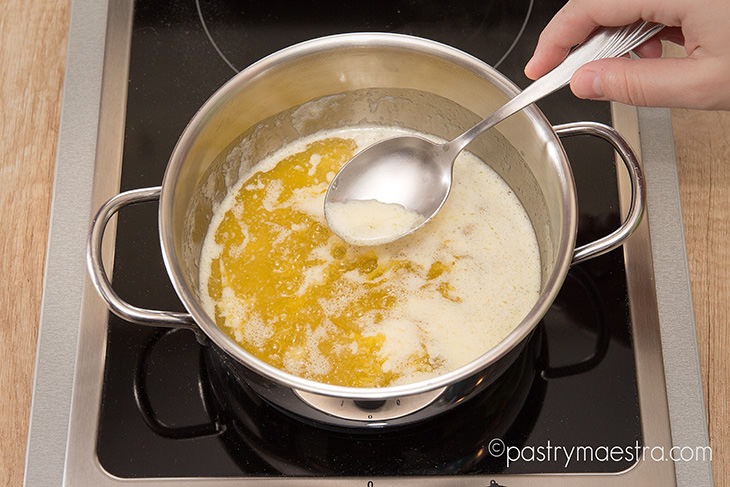
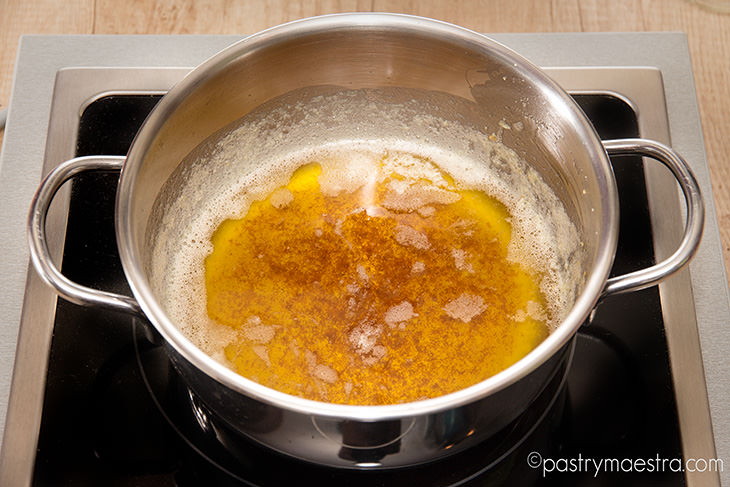
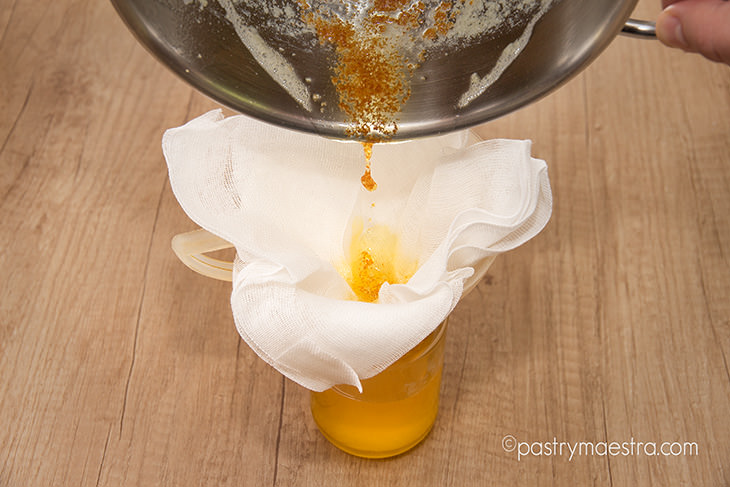

If you continue to cook butter after the milk solids brown, and they get even darker, you will get beurre noir, or “black butter”. As soon as it is done, lemon juice or vinegar is added to the hot butter, and it is usually served with eggs, fish or vegetables. Mmm, the French and their butter… I’ve just read that the French eat four times as much butter, 60 percent more cheese and nearly three times as much pork than Americans. Imagine that!


